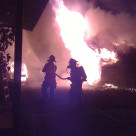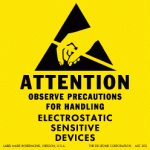Firefighters
Posted by FirmWarez on 28 Aug 2014 in Blog | 0 comments

I did this for six years as a volunteer.

It can be a complete emotional roller coaster. You see things no one should have to see.
But this isn’t about all of the horror I witnessed, this is about a lesson I’d throw at my engineers and other technologists when facing difficult problems or projects.
Way too many times I’d approach my teams (I’ve done tech management for a while, I’ve worked with a number of teams) with a challenge — whether an entire project, turn-around expectation, or bug — and I’d get a knee-jerk “we can’t do that” reaction.
Of course this was typically a knee-jerk reaction; I don’t hire technologists who “can’t do”. But still, often the analytical mind approaches a new problem by scanning the vulnerabilities, and without the discipline to fully process and then speak, looks at the risks and reacts “we can’t (or shouldn’t) do that”.
While working with folks who, with the exception of paramedics and the like, _might_ have a GED, I never experienced that reaction. Pull up to a fully involved (that is really on fire) structure, and these people would climb out of the truck, get water flowing, and start fighting fire. Even on fires we couldn’t fight — got to babysit a burning gasoline tanker one night, you just let those burn — there was no “we can’t do that”. Get out of the truck, get some gear, survey the situation and do what you can do, not proclaim what you can’t.
I saw a lot of ups and downs; lives lost, homes destroyed. I will always be proud of my service, but more so of the “salt of the earth” types who never said “can’t”. They used the tools (technology) they had to do the best they could. Survey the situation, and get to work. I find that’s valuable advice in the lab or board room.
(Yes, that is a picture of me, I’m pulling some hose in, backing up the guy on the nozzle. And yes, shit was on fire.)
